The University of the Wild EcoCampus
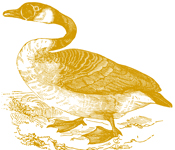
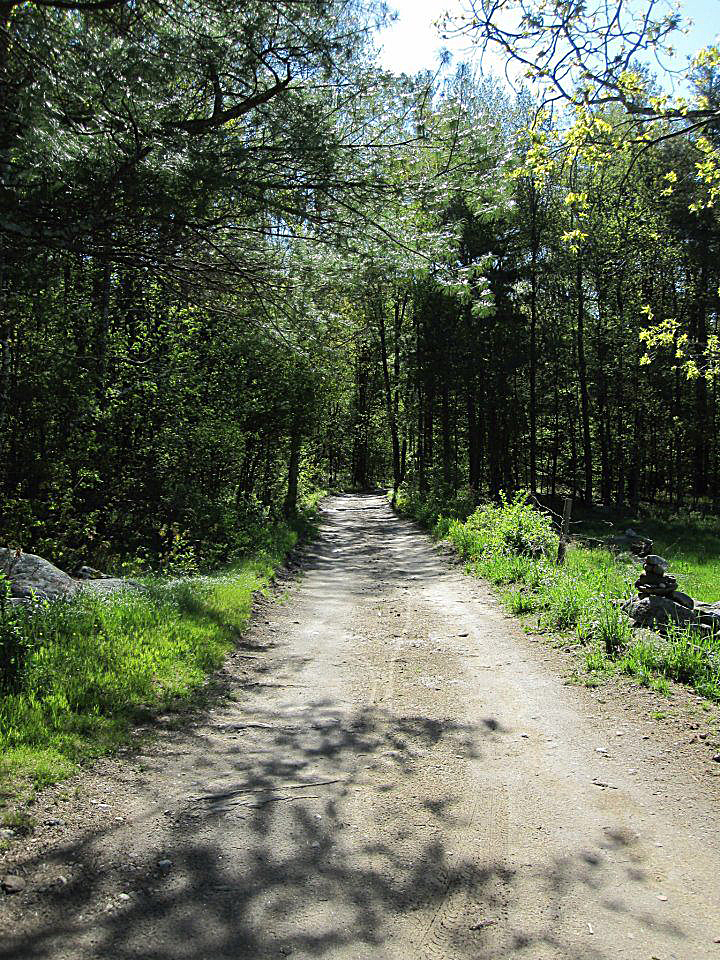
Glasheen Road
Our Campus Is Different
You will find no dorm buildings or administrative buildings, no large classroom buildings or lecture halls.
You will find, instead, trees, dirt roads, organic gardens, outdoor learning spaces, and more trees. Acres of trees. You will be learning a lot about ecology and most of your learning will be experiential, outdoors. Your classrooms will often be in our outdoor neighborhood of farmland, conservation land, rivers, and streams. The world-famous Harvard Forest 3850-acre ecology research facility is just down the road. The 81,000-acre Quabbin Reservoir and it’s surrounding wilderness reservation is just south of the village. Although our campus is quite small, the range of ecological study opportunities in our area is breathtaking.
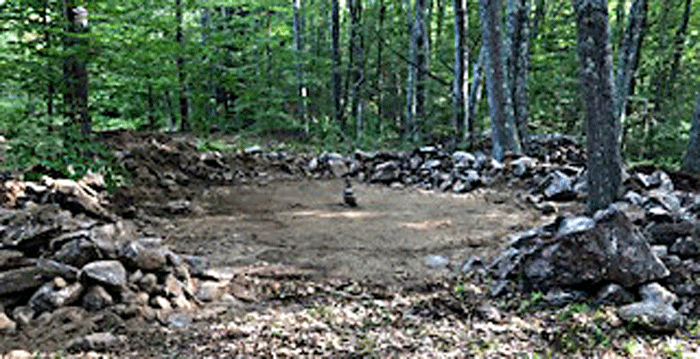
Stones in place to build the Elders’ Circle stone wall
Campus Center
Our campus center is Gaia’s Meadow, with a fire circle and learning pods. Nearby is the Elders’ Circle – a stone circle for ceremony, ritual, and learning. Tucked into the woods around the meadow are other learning pods and small, private, quiet areas for personal reflection, study, and rest. A path leads to our indigenous neighbor, Nipmuk Cultural Preservation, with whom we do occasional programming and whose members teach about indigenous topics. Another path leads to Earthlands, a retreat center with large organic gardens.
Our indoor all-purpose building has a classroom, a kitchen, and community space.
In spite of being deep in the woods, the campus is served by broadband internet.
Student Housing
Students will live in a variety of small eco-structures throughout the campus. Groups of students, as part of the curriculum, will help build a small student housing structure, gaining first-hand experience with tools and construction techniques both ancient and modern. Students will rotate through several eco-homes and you might find yourself living in a wigwam, a small log cabin, a tiny home, an experimental LEED-inspired, state-of-the-art cottage, or (in the summer and on field trips), in a tent. No matter what you live in, toilet and shower facilities and a central kitchen with dining area are nearby.
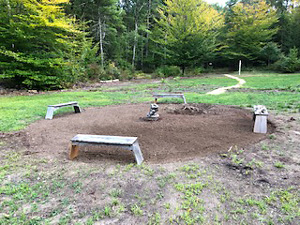
A pandemic-safe teaching pod
Gardens and Farming
A high priority for the use of the campus land is sustainable and regenerative farming, gardening, and wild crafting. We have organic vegetable gardens, fruit and nut trees, and forest garden areas. This gardening focus is used to feed the campus community and as an important part of the teaching curriculum, endorsing and modeling food solidarity.
It is in the gardens that students learn about indigenous food practices, state-of-the-art organic, permaculture, and biodynamic gardening, community gardens, market gardens, farmers’ markets, preserving food, and food security. The gardens also inform discussions about climate change and it’s effect on weather and food production, food insecurity and the just distribution of food within a society.
Our Eco-Hamlet
Some University of the Wild staff and faculty members live in our eco-hamlet, a small intentional eco-community of tiny homes and a yurt on one side of the campus. In addition to housing staff, the eco-hamlet is also a teaching area where students learn about rural and urban eco-villages, community governance, housing insecurity issues, and social justice issues.
The Campus Land
The 26-acre campus is located on original land of the Nipmuk First Nations people. Evidence of this Earth-connected culture still stands at the nearby Equinox Underground Chambers. Early European settlers removed the primitive forest around 1730, but many of the Colonial-era trees that grew from the sprouts of the primitive forest stumps still remain today.
Wildlife flourishes; open land and a healthy northern hardwood forest shelter coyotes, raccoon, fox, rabbit, porcupine, bobcat, deer, and moose. Cardinal Brook meanders through the campus on its way to the massive Quabbin Reservoir.
The campus is surrounded by over 4,000 acres of protected open land and farmscapes and is located within the 3,100 acre Quabbin-to-Wachusett Corridor for wildlife protection, recreation, and environmental education.
Central to the work of the University of the Wild and Nipmuk Cultural Preservation, a partner and abutting land owner of the campus property, is the integration of Indigenous studies, cultural preservation, and land use practices into all programs and services; ecologically sustainable land use, wisdom teachings, and an Earth-based lifestyle so necessary at this time of climate change and cultural fragmentation.
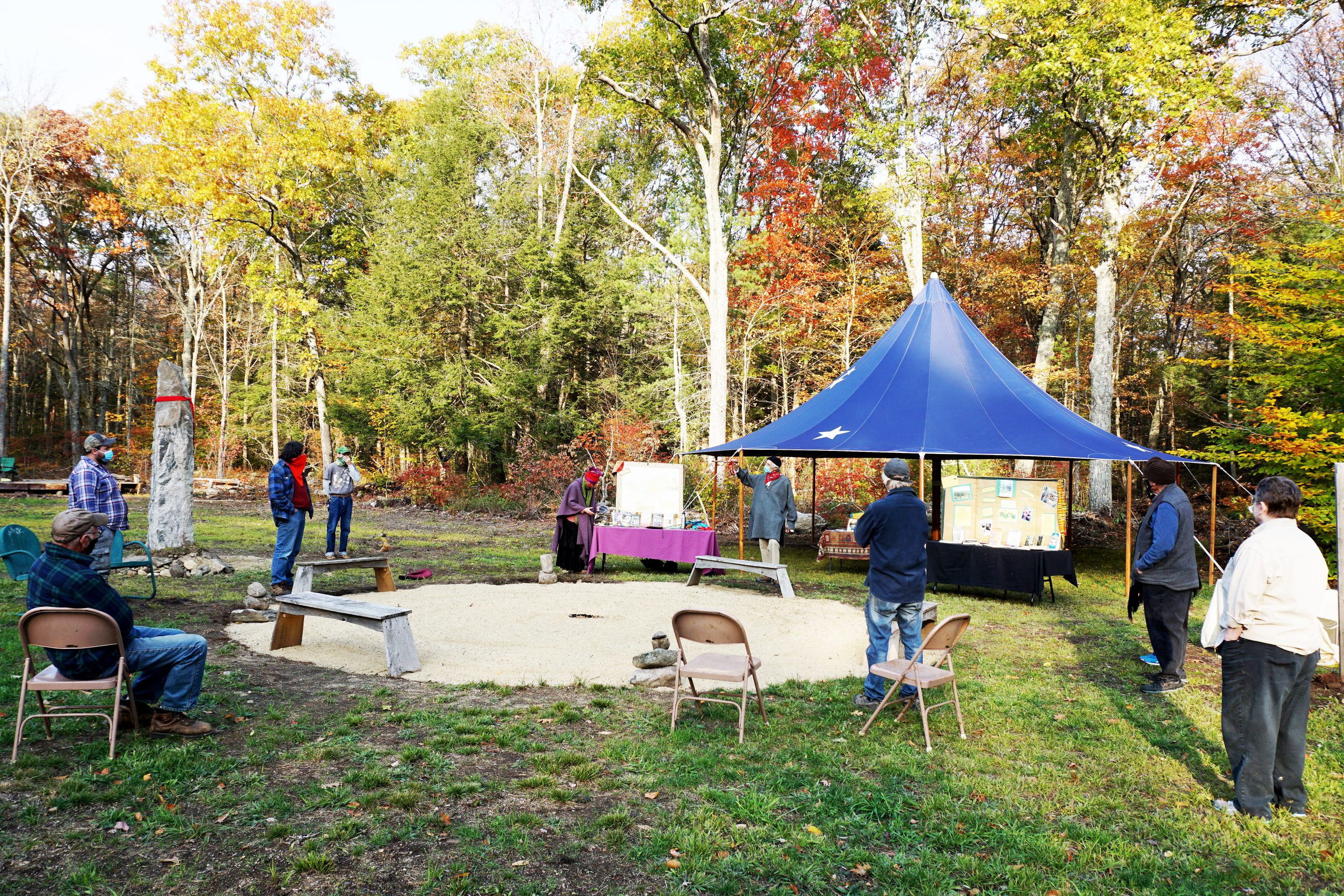
A fire circle
What Is LEED?
When you build a house or a shed or a store and successfully thread your way through all the local building codes to finally get your coveted occupancy certificate, you feel satisfied that your structure is surely solid and safe – isn’t it?
Well, consider that building codes are setting the lowest threshhold – the worst structure that you are legally allowed to build. Consider also that until very recently, energy efficiency and using renewable materials rarely figured into building codes at all.
With the explosion of environmental concern in the past few decades, as well as the fast and loose use of the term “green”, environmentalists needed new specifications that defined various levels and types of “green” buildings.
Today, there are over a hundred “green” building classifications in the United States, certifying that everything from appliances to homes, huge office buildings, and concert halls have been built to meet specific sustainable environmental standards.
LEED Certification
The most well-known of these is LEED certification (Leadership in Energy and Environmental Design), issued by U.S. Green Buildings Council. A project is awarded points for various environmentally sound features, determining which of the four LEED level certifications the project receives. LEED Platinum (the highest level) is quite difficult to reach and requires a strong committment to all things environmentally sustainable.
Living Building Certification
There is, however, a certification that is even harder to achieve and is considered the international gold standard for green building. The Living Building Challenge from the International Living Future Institute covers a broader range of issues than energy efficiency, even pulling health and happiness, equity, and beauty into the mix along with place, water, energy, and materials for a much more holistic approach. Sometimes called “LEED on steroids”, it is far and away the hardest certification to get.
Like local building codes, LEED certifications specify the least number of environmental goals that you need to reach for each level. A LEED Silver means that your project is less bad than a non-LEED building. The Living Building specifications flip the philosophy around: instead of “What is bad and how can we make it less bad?” the LBC says “What is good? Let’s figure out what “good” looks like and aim for that.”.
The LBC requires such pre-planning and dedication that there are currently only about 23 fully certified Living Buildings in the world – and four of them are in right here in western Massachusetts! Smith, Hampshire, and Williams Colleges each have one, and the Hitchcock Center for the Environment (also on Hampshire College property but not part of the college) is the fourth. All are within an hour’s drive of the University of the Wild.
In addition to the Living Building Challenge, the International Living Future Institute also has a Living Community Challenge “to create a symbiotic relationship between people and all aspects of the built environment.” Williams College is a registered Living Community.